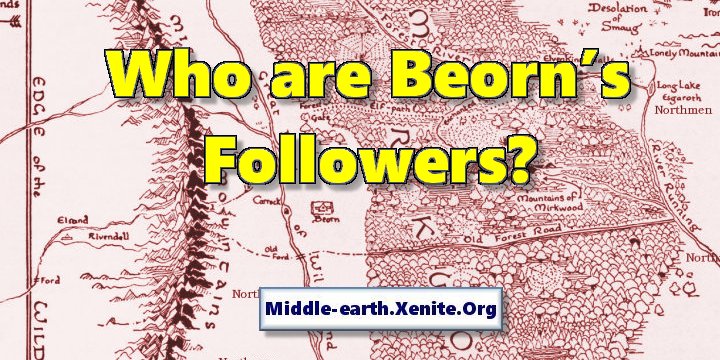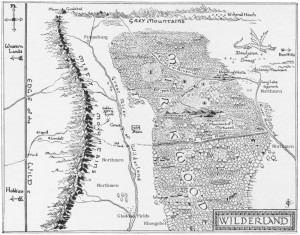
Q: Who are Beorn’s Followers?
ANSWER: One might easily get the impression from reading The Hobbit that Beorn lives all alone between the Anduin and Mirkwood. So when he summons many men to a feast at the end of the story, the reader has to wonder where those men lived. And why did they not help in the Battle of Five Armies?

In fact, the narrative mentions men living west of Anduin not far from Beorn’s lands earlier in the story. When Bilbo, Gandalf, and the Dwarves have escaped from the goblins they overhear the Wargs plotting a raid on men who have migrated from the south to settle in the mountain valleys close to the Orcs’ stronghold.
It is therefore quite plausible that other men were living on the east side of Anduin like Beorn, scattered across the landscape in small villages or farmsteads much like Beorn’s. There were no great towns or cities, however.
Bard also recruits men from the west when he refounds Dale, according to The Hobbit. The narrative doesn’t say where in the west these men lived. One might assume they came from the Vales of Anduin, and while that seems reasonable Tolkien later wrote in another text that there were and had always been men living along the northeastern edges of Mirkwood. He may have devised these “Free Men of the North” to explain where Bard drew some of his followers.
Of course, The Hobbit also mentions men akin to the Men of Dale and Lake-town living south of the Long Lake and these appear to be another source for Bard’s repopulation of Dale. And if you look at the Hobbit map of Mirkwood you’ll see that there are villages of woodmen living in the forest (but none near the mountains). Hence, I think it’s reasonable to say that Tolkien always imagined men living across the landscape, just not in many large groups.
J.R.R. Tolkien’s Northmen Essays
Christopher Tolkien published a very interesting essay his father wrote (posthumously titled ‘Of Dwarves and Men’) about the men who lived east of the Misty Mountains in The Peoples of Middle-earth, the 12th book in the History of Middle-earth series. The essay filled in many gaps for fans who wanted to know more about the histories of the Northmen. Other essays were also published in Unfinished Tales of Númenor and Middle-earth. The Northmen were descended from two tribes or nations of Men in the First Age. These were the ancestors of the Bëorians, or the Folk of Bëor the Old (aka the First House of the Edain), and the Marachians (the Third House of the Edain).
The proto-Marachians dominated in the lands east of the Misty Mountains and the proto-Bëorians dominated in the lands west of the Misty Mountains, but groups from both nations lived on both sides of the mountains. They dwelt in these lands for about 2,000 years until the War of the Elves and Sauron in the middle of the Second Age. They suffered great loss and their civilizations were destroyed.
By the end of the Second Age only small groups of Men from these two great nations remained, living far to the north on both sides of Greenwood the Great. Apparently after Sauron was taken to Númenor and Gil-galad extended his power eastward the Free Men of the North began expanding southward. By the time Isildur marched north toward Rivendell at the beginning of the Third Age, there were “woodmen” again living near the southern borders of Greenwood.
The continuity between these woodmen and later peoples described as “Men of the Vales of Anduin”, “Woodmen” and “Northmen” is broken by thousands of years of upheaval and war in Middle-earth, but J.R.R. Tolkien clearly intended for their descendants to be the same Men described in The Hobbit and The Lord of the Rings.
See also:
- How Much Land did the Beornings Control?
- What Were the Beornings Like?
- Did Grimbeorn the Old Have any Sons?
- What Does Beorn Mean?
- What Were the Honey-cakes of the Beornings?
- Was Beorn in the Hobbit a Were-bear?
- Beorning Questions
# # #
Have you read our other Tolkien and Middle-earth Questions and Answers articles?
